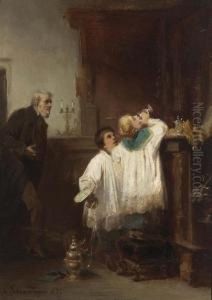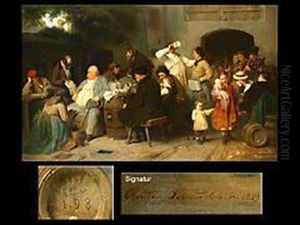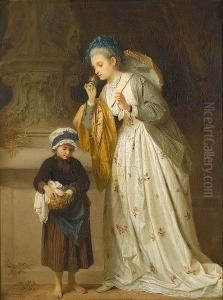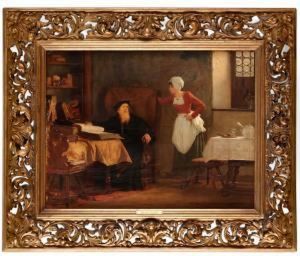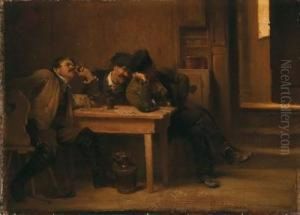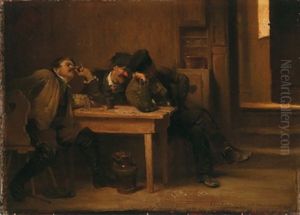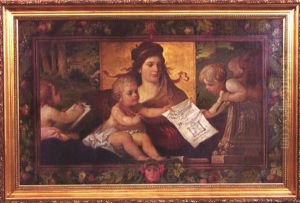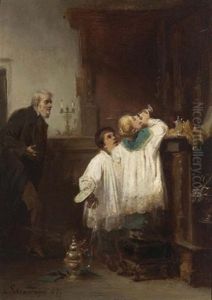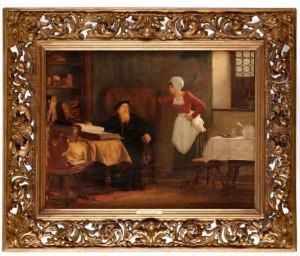Claudius Von Schraudolph Paintings
Claudius von Schraudolph, born Johann Claudius von Schraudolph on September 14, 1813, was a German painter associated primarily with religious and historical subjects. Hailing from Oberstdorf in the Kingdom of Bavaria, Claudius was part of a family with a strong artistic tradition; his brother Johann Schraudolph was also a notable painter.
Trained at the Academy of Fine Arts Munich under Peter von Cornelius, Schraudolph became part of the Nazarene movement, which sought to revive the spirituality and sincerity found in medieval and early Renaissance art. This movement was characterized by its members' pious Catholic beliefs and their rejection of the then-dominant neoclassical aesthetic in favor of a return to the style and methods of early Christian art.
Schraudolph's career was marked by significant commissions, most notably his work on the frescoes of the Speyer Cathedral, which he undertook from 1846 to 1853 upon the recommendation of King Ludwig I of Bavaria. These frescoes, influenced by the Nazarenes’ emphasis on devotional themes and stylized figures, contributed to the 19th-century restoration of the cathedral.
Apart from his work at Speyer, he painted altarpieces and created designs for stained glass windows, thus contributing to the ecclesiastical and religious artistic revival in Germany. His works are found in various churches and collections throughout the country, and they continue to be studied for their part in the 19th-century artistic movements that sought to counteract the effects of industrialization and secularism in art.
Claudius von Schraudolph passed away on May 1, 1891, in Munich. His legacy is that of a skilled artist who infused his deep religious convictions into his art, and through this, he left a mark on the revival of Christian art in his era.
